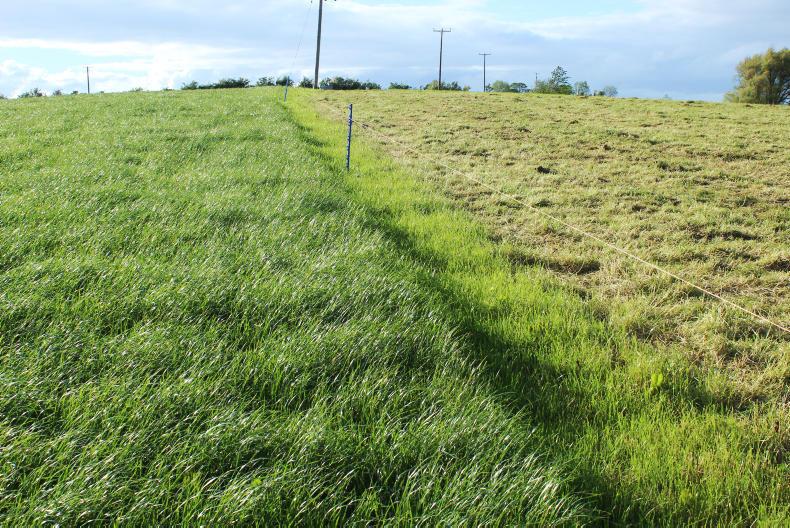Grassland in NI could be removing up to 1.2m tonnes of carbon dioxide (CO2) from the atmosphere each year, a leading soil scientist has said.
Dr Dario Fornara from AFBI said that carbon sequestration by NI grassland could be significantly higher than the 750,000t of CO2 which is currently used in the government’s greenhouse gas inventory.
“The key issue here is the lack of experimental data, especially long-term data relating to changes to carbon stocks in soils and forest biomass. This is a problem for the UK, not only NI,” he said.
During an online presentation last week, Fornara outlined how management can affect the soil’s ability to take in carbon. As an example, where soil gets compacted, carbon sequestration could be reduced.
A long-term grassland experiment at AFBI Hillsborough has been examining rates of sequestration across eight different nutrient applications, including various rates of
cattle and pig slurry, as well as an inorganic fertiliser, and a control that receives no treatments.
Carbon saturation
“All soils, regardless of treatment, have been increasing carbon stocks, so they haven’t reached carbon saturation even after 50 years. We found larger soil carbon stocks associated with higher levels of cattle slurry applications,” he said.
Fornara also highlighted other studies which found the frequency of ploughing and reseeding on commercial grassland farms across NI did not affect soil carbon stocks.
Land use
Across all types of land use in NI, AFBI research suggests that carbon sequestration is being underestimated in the government’s greenhouse gas inventory.
For example, the forestry sector is estimated to be capturing 600,000t of CO2 per year, but Fornara suggests this could actually be as much as 1.5m tonnes if current targets for afforestation are met.
Overall, the land use sector is currently predicted to be a net emitter of 500,000t of CO2 annually under the greenhouse gas inventory.
Fornara said there is potential for the sector to be net sink, capturing almost 900,000t per year.
Read more
How grassland can help combat global warming
Cattle emissions wildly overstated
Grassland in NI could be removing up to 1.2m tonnes of carbon dioxide (CO2) from the atmosphere each year, a leading soil scientist has said.
Dr Dario Fornara from AFBI said that carbon sequestration by NI grassland could be significantly higher than the 750,000t of CO2 which is currently used in the government’s greenhouse gas inventory.
“The key issue here is the lack of experimental data, especially long-term data relating to changes to carbon stocks in soils and forest biomass. This is a problem for the UK, not only NI,” he said.
During an online presentation last week, Fornara outlined how management can affect the soil’s ability to take in carbon. As an example, where soil gets compacted, carbon sequestration could be reduced.
A long-term grassland experiment at AFBI Hillsborough has been examining rates of sequestration across eight different nutrient applications, including various rates of
cattle and pig slurry, as well as an inorganic fertiliser, and a control that receives no treatments.
Carbon saturation
“All soils, regardless of treatment, have been increasing carbon stocks, so they haven’t reached carbon saturation even after 50 years. We found larger soil carbon stocks associated with higher levels of cattle slurry applications,” he said.
Fornara also highlighted other studies which found the frequency of ploughing and reseeding on commercial grassland farms across NI did not affect soil carbon stocks.
Land use
Across all types of land use in NI, AFBI research suggests that carbon sequestration is being underestimated in the government’s greenhouse gas inventory.
For example, the forestry sector is estimated to be capturing 600,000t of CO2 per year, but Fornara suggests this could actually be as much as 1.5m tonnes if current targets for afforestation are met.
Overall, the land use sector is currently predicted to be a net emitter of 500,000t of CO2 annually under the greenhouse gas inventory.
Fornara said there is potential for the sector to be net sink, capturing almost 900,000t per year.
Read more
How grassland can help combat global warming
Cattle emissions wildly overstated






 This is a subscriber-only article
This is a subscriber-only article










SHARING OPTIONS: